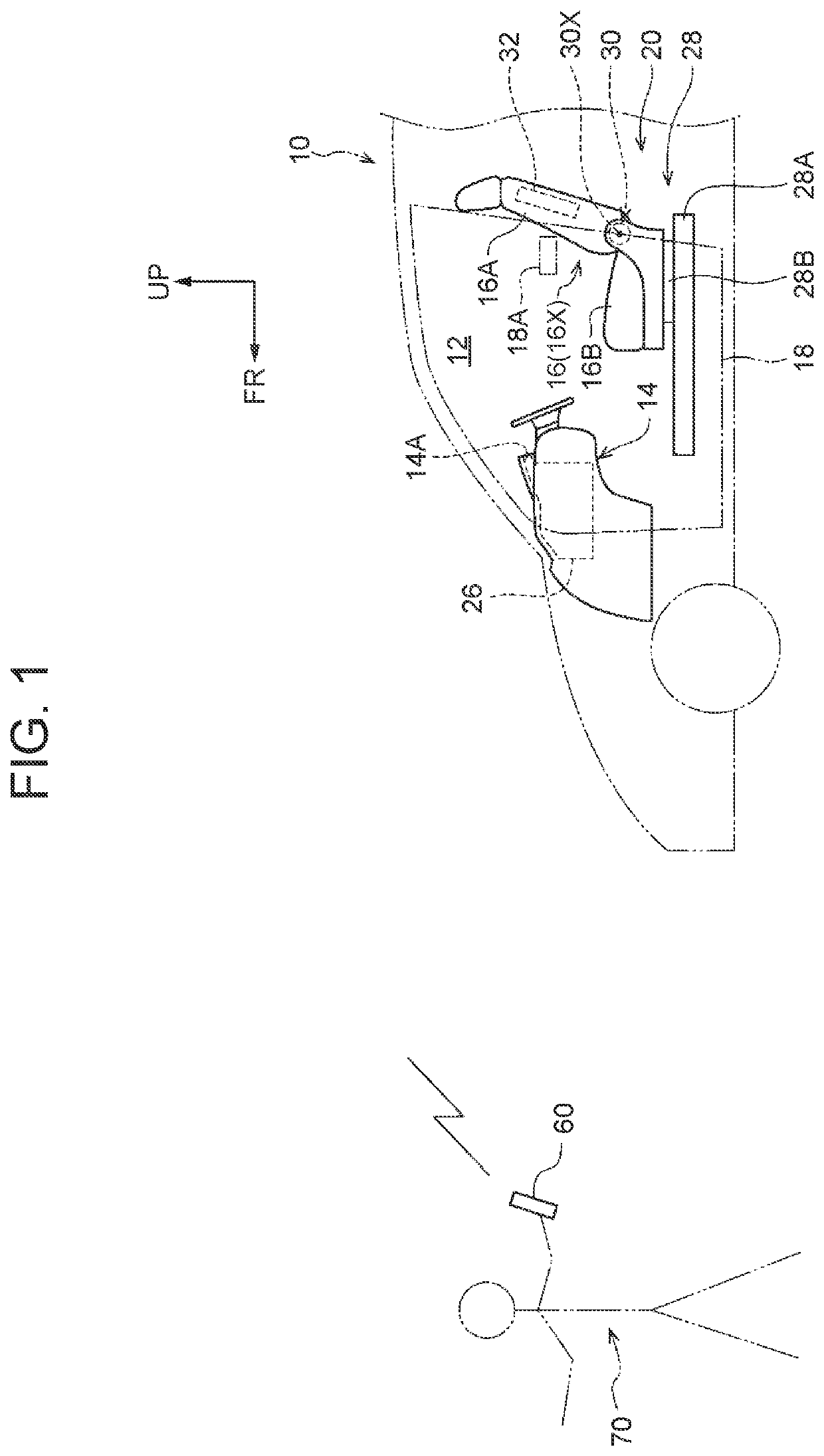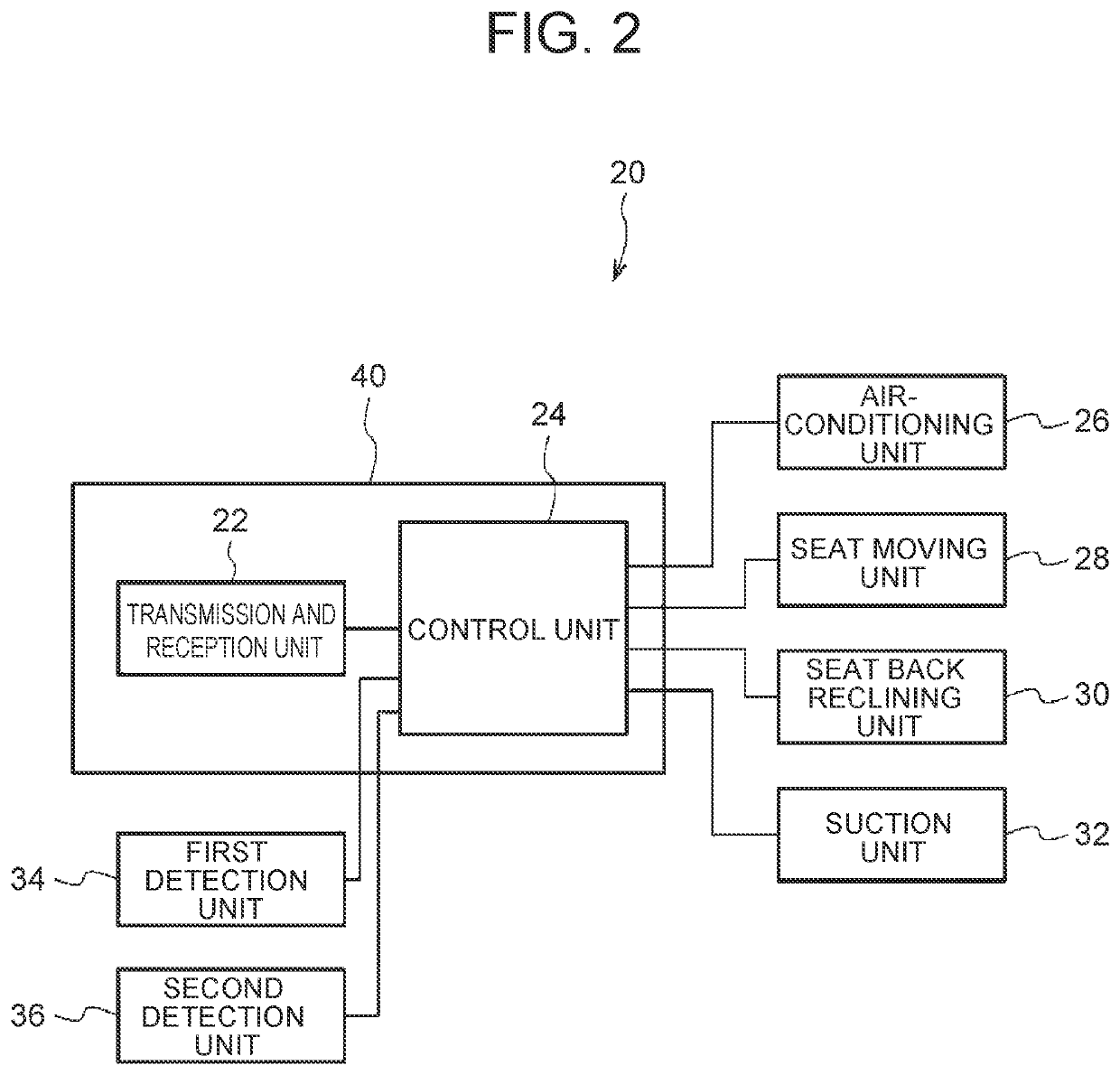On-board device, control method of on-board device, non-transitory storage medium storing program, and surface temperature adjusting method of vehicular seat
- Summary
- Abstract
- Description
- Claims
- Application Information
AI Technical Summary
Benefits of technology
Problems solved by technology
Method used
Image
Examples
Embodiment Construction
[0032]An on-board device, a control method of an on-board device, a control program of an on-board device, and a surface temperature adjusting method of an on-board device according to one embodiment of the present disclosure will be described with reference to FIGS. 1 to 5D. FIG. 1 schematically shows an on-board device 20 according to the present embodiment operated by remote control. FIG. 2 a bloc diagram showing one example of the schematic configuration of the on-board device 20 according to the present embodiment. In FIG. 1, arrow FR shows a vehicle front side, and arrow UP shows a vehicle upper side.
[0033]As shown in FIG. 1, the on-board device 20 is mounted on a vehicle (automobile) 10. The vehicle 10 is an engine car that uses only an engine as a driving source in one example of the present embodiment. As shown in FIG. 2, the on-board device 20 is configured by including a transmission and reception unit 22, a control unit 24, an air-conditioning unit 26, a seat moving unit...
PUM
 Login to View More
Login to View More Abstract
Description
Claims
Application Information
 Login to View More
Login to View More - R&D
- Intellectual Property
- Life Sciences
- Materials
- Tech Scout
- Unparalleled Data Quality
- Higher Quality Content
- 60% Fewer Hallucinations
Browse by: Latest US Patents, China's latest patents, Technical Efficacy Thesaurus, Application Domain, Technology Topic, Popular Technical Reports.
© 2025 PatSnap. All rights reserved.Legal|Privacy policy|Modern Slavery Act Transparency Statement|Sitemap|About US| Contact US: help@patsnap.com



